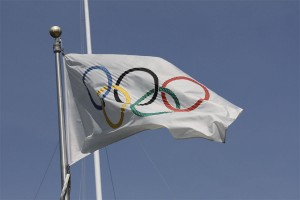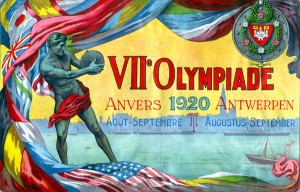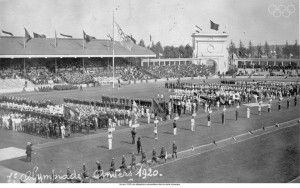Flag of global games

The start of the Winter Olympics reminds millions of people around the world that the games are draped in flags. Each nation marches into the stadium sporting its own standard, and the Olympics itself has a well-known banner.
The Olympic flag is simple: five interlocked rings of different colors on a white background. “The five rings represent the five continents,” says the official website of the games (www.olympic.org). The six colors – blue, yellow, black, green, red and white – “represent all nations. It is a misconception… to believe that each of the colors corresponds to a certain continent.”
Pierre de Coubertin, who is often dubbed “the father of the modern Olympic Games,” said that “the six colors are those that appear[ed] on all the national flags of the world” at the time the international banner was designed.
According to the Olympics website, “the universality conveyed by the symbol and the flag was a new idea at the beginning of the 20th century. Nationalism was very strong and tension between certain countries was high. It was in this climate, however, that Coubertin proposed the symbol of the rings which aimed to encourage world unity.”
While the modern Olympics debuted in 1896, the flag didn’t. Coubertin didn’t devise the interlocked rings and the flag until 1914. The banner’s public display was delayed due to World War I, which canceled the 1916 games, scheduled for Germany.

When the Olympics returned in 1920, the new flag was finally raised over the stadium in Antwerp, Belgium, and flapped during the many sports. A news service article began its coverage this way: “The Olympic Stadium was opened today. It was a formal ceremony, staged with a setting of flags, banners and fluttering pennants.”

As for the American athletes, Pat McDonald, a New York City policeman and track-and-field athlete, entered the stadium “bearing aloft Old Glory.”
Forty years later, at the 1960 games in Rome, a new tradition was added when the Olympic flag was carried into the venue for the first time. Previously, it had been hoisted and remained on its staff.
Another flag-related tradition occurs at the end of the winter games. The Olympic standard is lowered, folded and handed to the mayor of the next host city. This year, the mayor of Sochi, Russia, will pass the colors to his counterpart in Pyeongchang, South Korea.
The flag will wave there in 2018.
